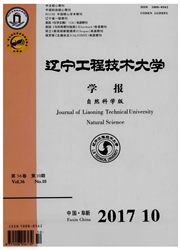

 中文摘要:
中文摘要:
为了能够给平面爆炸应力波作用下地下洞室加固,利用试验和理论研究了在平面应力波的作用下,地下洞室动应力集中系数分布规律。结果表明:当洞室受到拱顶正上方平面波作用时,洞壁各个位置都是产生压应变,拱项至侧墙底部动应力集中系数先增加后减少,最大在拱脚处。当入射方向从拱顶向左侧偏移至水平方向,迎爆侧和其背爆侧动应力集中系数较小,与迎爆方向垂直的方向动应力集中系数较大,并且入射方向两侧的高应力集中系数的作用范围随着入射角度变化而不同,动应力集中系数也逐渐不以应力波的入射方向对称。这将对实际工程进行抗爆设计非常有意义。
 英文摘要:
英文摘要:
In order to better reinforce underground openings, the distribution of dynamic stress concentration factor of underground openings under the planar waves was investigated based on experiments and theoretical analysis. The results show that when underground openings are affected by planar waves from vault, there are compressed strains on the wall of underground openings. The most of strains occur on arch foot with the incident direction from vault to rib. The peak strains increase at first and then decrease. It also shows that with the change of incident direction from vault to rib, the dynamic stress concentration factor of face-blast side and back-blast side is smaller than that of the direction vertically to face-blast side. With the increase of incident angle, the range and symmetry of dynamic stress concentration factor also vary. It is very useful for anti-explosion design.
 同期刊论文项目
同期刊论文项目
 同项目期刊论文
同项目期刊论文
 期刊信息
期刊信息
